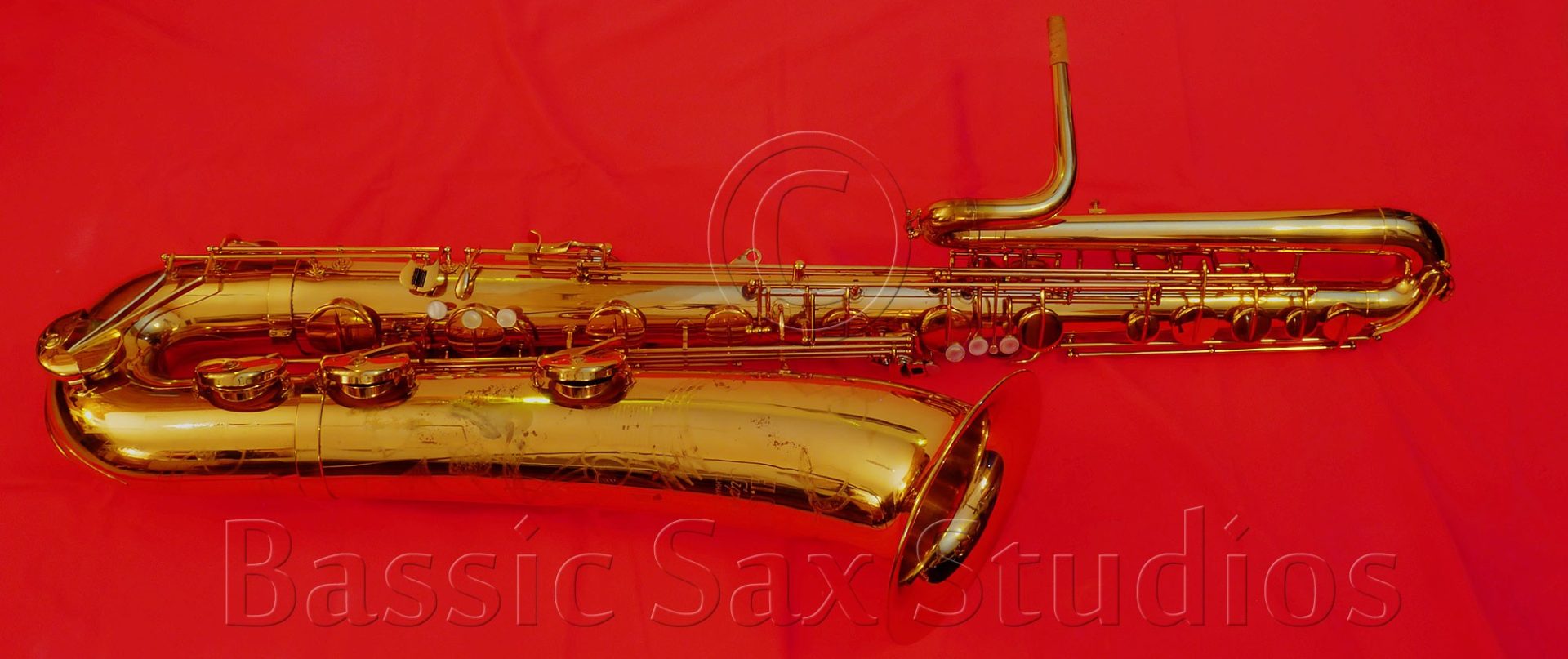Estimated Date Of Publication Based On The G# Trill Key & Conventional Neck Fastening Screw
There is unfortunately no date of publication anywhere in this brochure. However, given we know that Hohner discontinued G# trill keys in the mid-50s, we can therefore surmise that this brochure is from no earlier than 1949 (the year that President production started), and no later than approximately 1955—most likely earlier.
The reason I state that this publication is most likely earlier than 1955, is because of alto serial #2559. According to the serial number chart on Saxpics, that has been put together using a variety of reputable sources, this horn would be circa late 1952 or early 1953. It is likely one of the first Hohner Presidents with rolled/flanged tone holes. Alto #2559 has the characteristic round, front-mounted, thumb screw for tightening the neck. Both the tenor below, and the alto illustrated on page 3 do not. More on this below, but suffice to say at this time, based on this information, the horns being advertised in this brochure are likely 1952 models or before.
Unusual Neck & Bow Guards
The tenor illustrated on this page, and the alto illustrated on page 3, have a couple of features that I have not seen before on Hohner Presidents:
- Note the neck guard. This type of guard is not typical on any of the altos or tenor President saxophones that I have amassed for the Hohner Gallery in Bassic Sax Pix. Given that I have samples from around the world, and serial numbers that span from 24XX to 15XXX, you would think I might have run across at least 1 horn that looks like this. This is what all the President tenor necks that I’ve seen look like. Whereas the illustrated neck guard is in fact similar to the one seen in this example of a Hammerschmidt Klingsor alto.
- Note too the bow guard. This type of guard is also not typical on any of the President tenor saxophones which have appeared for sale in the past couple of years. Compare the illustrated bow guard to one we see on Hohner Presidents all the time. Big difference. The type of bow guard illustrated reminds me of the one on my Martin Handcraft tenor.
The Missing Thumb Screw & What It Tells Us
This tenor in the illustration is also lacking something that is a Hohner President feature: the round, front-mounted, thumb screw for tightening the neck. However, the lack of this tells us something very important about the age of this brochure, and by extension, something about the age of the horns it is promoting.
In the early 1950s, Hohner switched its neck design to a legally protected—”gesetzlich geschützten”—(abbreviated Ges.- Gesch. on the socket of the horn), true, double socket neck. This neck was held in place by a round thumb screw. Prior to the advent of the double socket neck, the neck fastening screw of the Hohner Presidents looked liked it did on any other saxophones—as illustrated in this alto, serial number 24XX.
The neck fastening screw on the above-illustrated tenor looks like a conventional one. Furthermore, Hohner does not mention anything about a “Ges. – Gesch.” neck design. Given that this brochure lists the attributes of their horns, in all likelihood if the President saxophones already had a legally protected neck design, they would mention it.
Rolled Tone Holes Anyone?
Something else that Hohner would most likely have mentioned, if these horns had them, were rolled tone holes. As noted above, according to the serial number and features chart on Saxpics, rolled/flanged tone holes first made their appearance in 1953. Prior to this, the tone holes were soldered, and had a bevelled appearance. Alto 24XX illustrates these early tone holes very well.
Unfortunately the tone hole details were really not included in the drawn illustrations of the tenor and alto saxophones. Even the close-up illustration on page 4 doesn’t show the details with 100% accuracy. Therefore we cannot, with 100% certainty, say that these illustrated Presidents did not have rolled tone holes. However, in all likelihood these advertised horns were likely pre-rolled tone holes.
What’s Missing In The Finish Options
German saxophone historian, repair tech, and professional musician, Uwe Ladwig, has listed 4 finish options for the Hohner Presidents¹:
- Lacquer
- Silver plated
- Nickel plated
- Two tone: lacquer body with nickel plated keys
The pamphlet only notes 3 finish options. The two tone option—which became the most popular—is not listed here. Obviously Hohner only began offering the lacquer body with nickel plated keys later in the President’s production run. The earliest example of a two tone President that I have encountered to date happens to be my alto 48XX, which is circa 1955.
______________________________________________________
¹ I want to thank Uwe Ladwig for generously sharing his research with me. It was originally published in der deutschen Fachzeitschrift—German music journal—SONIC sax & brass.





You must be logged in to post a comment.